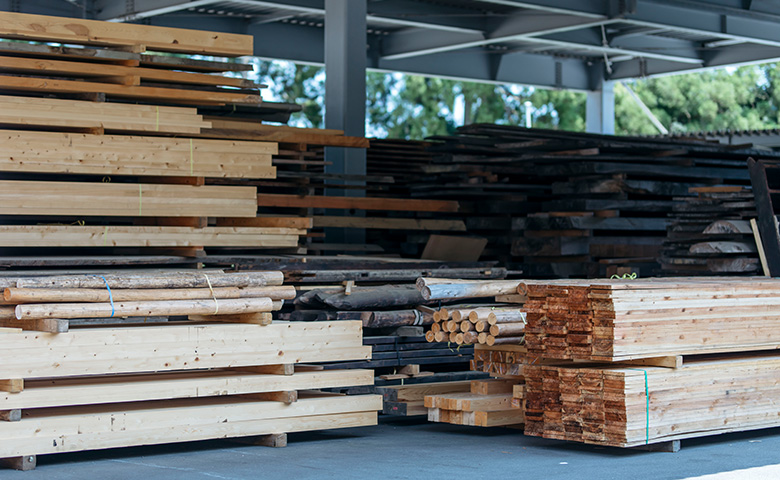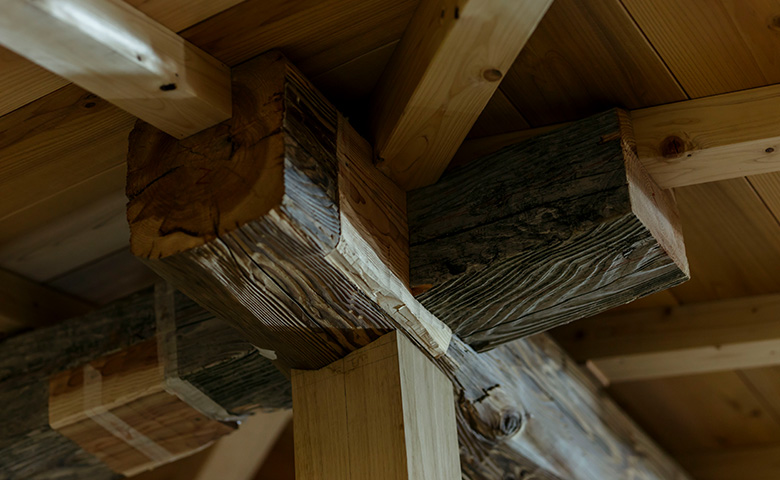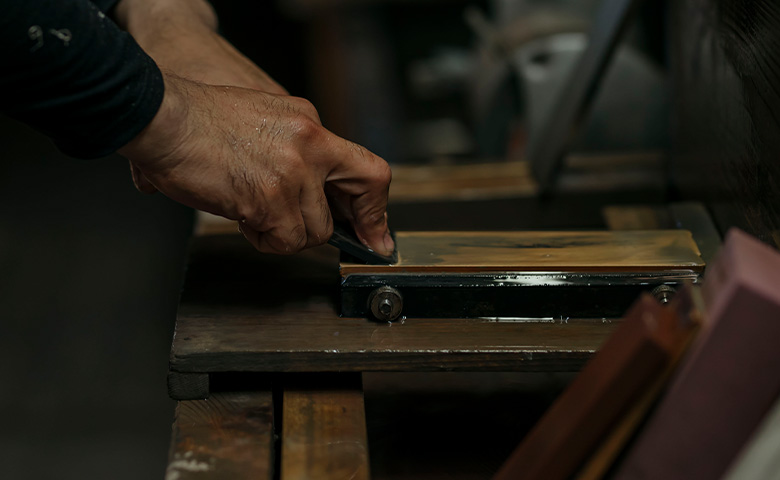About us
三角屋について
三角屋は日本建築をつくる集団です。
私たちが理想とする日本建築は、職人の技術によって素材の力が活かされた建物。
三角屋にはそれを実現するために必要な素材があり、大工と設計士がいます。
Sankaku-ya is a group that creates Japanese architecture.
Our ideal Japanese architecture is a building that makes the most of the power of materials through the skills of craftsmen.
At Sankaku-ya, we have the materials, techniques, carpenters, and architects necessary to make this happen.
私たちは日本の伝統的な建築技術を基盤に国内外の住宅や茶室、料理店から物販店舗、それに伴う庭づくりまで幅広く手がけています。
滋賀県高島市の朽木工場と京都市内にある事務所の二つの場所をものづくりの拠点とし、 原木から挽いた素材を揃え、常に大工と設計士が切磋琢磨し、より完成度を高めるための仮組を行う−。
ときに新しい技術や知識を取り込みながら、日本建築に継承されてきた技と心に敬意をもって今の時代に応じたものづくりに向き合い続けています。
Based on traditional Japanese building techniques, we practice a wide range of craftsmanship, from tea ceremony rooms, private residences, and small stores to public buildings, including gardening, both in Japan and overseas.
Our ancestors enjoyed not only the material beauty of things and spaces, but also the beauty of changes over time, such as the passage of time and the seasons. The gardens and teahouses that are built in Japan also place emphasis on creating and reproducing the flow of time and the changing natural landscape as it is.
We value the aesthetic sense and sensibility that has been nurtured and refined by the climate of Japan since ancient times and that resides latently within us, and with respect for the skills and spirit of Japanese architecture that have been handed down over the years, we continue to face the challenge of creating products that meet the needs of the current age.
01. Materials
素材
三角屋では、個性豊かな木材を国内外を問わない独自のルートで原木のまま調達し、滋賀県の朽木にある自社工場で製材・乾燥・保管をしています。私たちが原木からの製材にこだわるのは、流通品の規格に縛られず様々な木材の長所を活かす使い方ができるからです。
森林大国である日本は古くから木と向き合いその特性を活かすことによって何百年も風雨に耐える建築を生み出してきました。
三角屋では時代が移り変わってもその姿勢を受け継ぎ、材料を身近に感じ、素材の声に耳を傾けながらものづくりを行っています。
At Sankaku-ya, we procure the unique lumber we use as building materials in its original form through our own routes, both domestic and international, and then saw, dry, and store it at our vast factory in Takashima City, Shiga Prefecture.
As a forested country, Japan has been confronted with wood since ancient times, and by taking advantage of its characteristics, has created buildings that can withstand the elements for hundreds of years. The reason why we insist on sawing lumber from raw wood is because we believe in the importance of always feeling the materials close at hand.
Even though the times have changed, we at Sankaku-ya have inherited this attitude and continue to manufacture products while listening to the voice of the materials.
02. Technic
技術
木を”建物として生かす”のが大工の仕事です。三角屋では自然の素材が本来持っている性質を見極め、樹種や部材に応じて道具を使い分けながら手刻みで加工しています。
素材の持つ力を最大限に生かし適材適所で使い分けることで居心地のよい建築となります。
50年後、100年後にも朽ちることなく、さらに美しさを増していくものづくりができるよう、三角屋では今でもそうした技術を守り、次の世代へ伝えていくことを使命と考えています。
A good carpenter uses different tools for different species of trees and materials, and works with natural materials based on their inherent properties. By using the strengths and weaknesses of the materials in the right places, a sense of harmony and unity is created between the building and the garden, resulting in a comfortable architecture.
We at Sankaku-ya believe that it is our mission to preserve these techniques and pass them on to the next generation so that we can continue to make products that will not decay or become more beautiful in 100 or 200 years.
03. Pre-build
仮組
建物を作る時は、現場に材料を用意し加工作業をしながら組み立てるのが一般的です。しかし、三角屋では可能な限り工場内で完成に近いところまで一度組み上げる「仮組」という工程を行います。
大工と設計士が実際に組み立て、図面上の平面的なイメージを立体として体感し、すり合わせをしていきます。同時にお客様にも体感いただくことができるため、一緒に作るという感覚を共有できるということも、三角屋が仮組を行う大きな理由の一つです。
一度仮組したものを解体して現地に運び組み直しますので、世界中どこに建てるとしても高い品質を保ちながら効率よく建てることができます。
When constructing a building, it is common to prepare materials at the site and assemble them while processing them. However, at Sankaku-ya, we use a process called "tentative assembly" where the building is assembled in the factory as close to completion as possible. The carpenters and designers actually assemble it through a trial-and-error process, so that the two-dimensional image expressed on the drawing can be experienced as a three-dimensional image, and the two can be reconciled.
Once the building is temporarily assembled, we dismantle it, transport it to the site, and reassemble it, so that no matter where in the world it is built, we can build it efficiently and quickly while maintaining high quality.
This is one of the main reasons why Sankaku-ya uses temporary assembly, as it allows us to share the feeling of "building together with the client".
04. Design
設計
お客様の想いやイメージを丁寧にヒアリングし、理想のその一歩先を考えながら空間が持つ潜在的な魅力を最大限に引き出していくのが設計の仕事です。
三角屋が建築を考える時には建物単体ではなく、その土地の性格や周辺環境・景観に配慮しながら建築と庭を一体で考えることを心がけています。
また、設計士と大工の距離がとても近いため、実際の素材を目の前にしながら完成まで緊密に話し合って進められるのも三角屋の大きな強みです。
長く心地よく建物を使っていただくために建てたら終わりではなく、必要に応じた修繕をしながら時間をかけて共に育てていくことも大切にしています。
Our job as designers is to listen carefully to the thoughts and images of our clients, and think one step beyond the ideal that cannot be fully expressed, while maximizing the potential appeal that the space should have.
We do not only consider the building, but also the character of the land on which the building stands, the surrounding environment, and the landscape, so we are good at complex architectural planning, such as considering the building and garden as a whole.
Another of our strengths is the close proximity between the architect and the carpenter, which allows us to discuss and work closely with them until the project is completed while seeing the actual materials in front of us.
A building is not finished when it is built, but is nurtured over a long period of time, so even after completion, we can make minor repairs and design changes.
Experience
三角屋を体験する
For Clients
ご依頼を検討中の方へ




























































